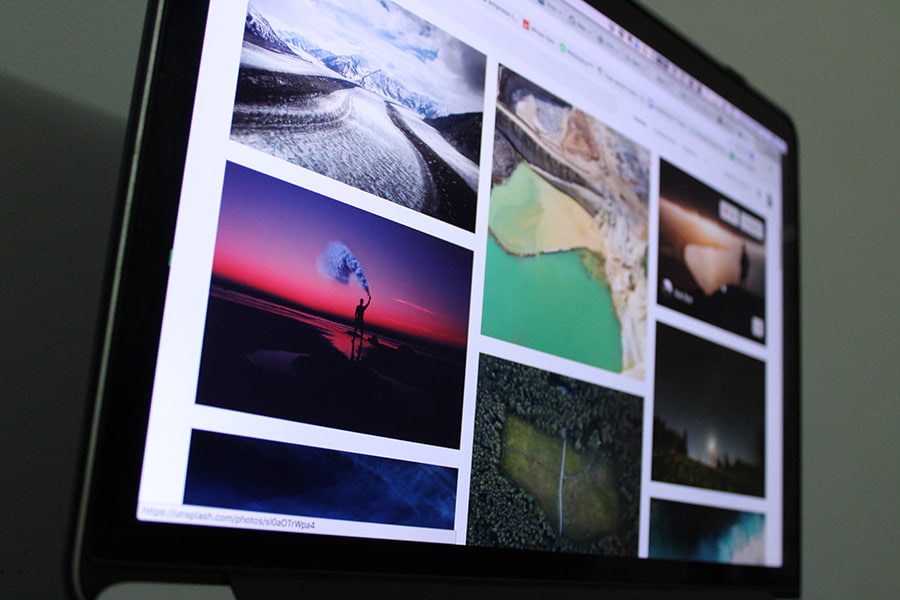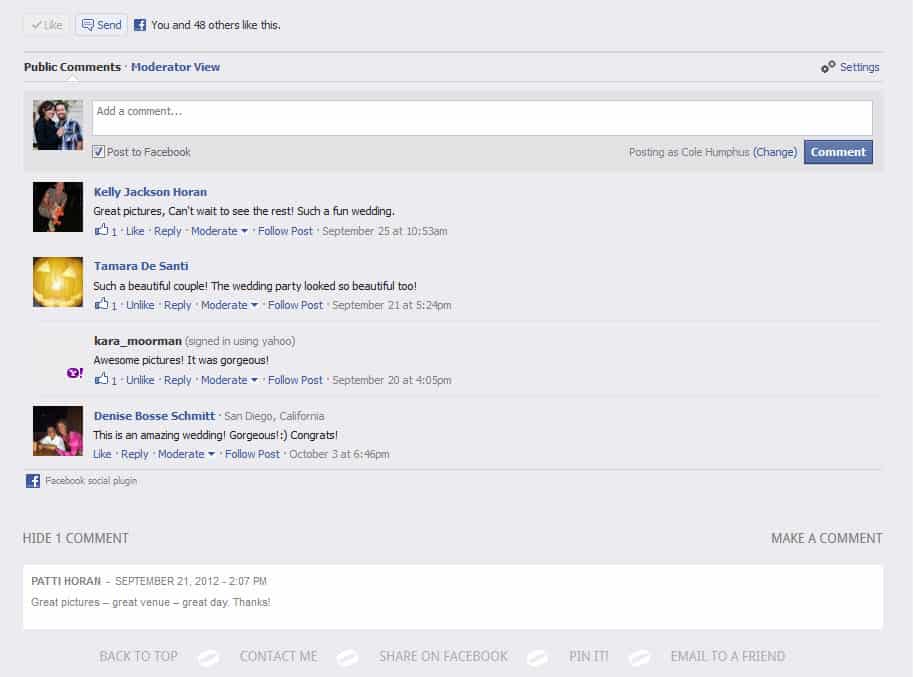Let’s talk IPS photography vs. digital sales …advantages, disadvantages and which makes the most sense for YOUR business!
IPS photography vs. digital sales is one of those subjects that really shouldn’t be controversial. Let each business owner figure out what’s best for him or her and move on, right?
Except it IS controversial. Each side thinks their way is the best way and what’s best for the industry. IPS (In Person Sales) photographers feel giving away so many digitals makes each image, and thus the industry itself, less valuable. Digital sales photographers believe they are giving what clients want embracing the societal shift away from prints.
Who is right when it comes to IPS vs. digital Sales?
Neither. Or maybe both.
There are clients out there who want both prints and digital images. What matters is you make the best decision for your business!
In this tutorial, we’ll talk IPS vs. digital photography sales….what those terms mean, the advantages and disadvantages of each and some hybrid techniques you might want to consider. That way you can make an informed decision that fits your personal philosophy, your lifestyle, your clientele, you business style and your goals.
You Do You.
I’ll be blunt. No matter which business model you follow, at some point in time, you will get pushback from other photographers about it. They’ll say your business model is wrong. You’ll hear you are ruining the industry and that you’ll never make any money doing it that way.
As my Wyoming born-and-bred father used to say…
That’s a bunch of hogwash.
The truth is, there are successful photographers out there using both methods. I know ladies KILLING it doing in-person sales. And I know dudes who are positively crushing it selling only digitals. And there are lots of us somewhere in the middle running successful businesses and loving life.
My best advice on IPS vs. digital? Decide what’s best for you and let others decide what’s best for their business.

What is IPS photography?
IPS is short for in-person sales. This photography business model is centered around selling tangible prints and products to clients. It’s called in-person sales because most photographers using this model schedule an in-person meeting when the images are ready to view.
But let’s face facts. It’s 2021 and “in-person” isn’t always possible these days. But ips photography can still be accomplished using apps like Zoom or FaceTime. Connect from a coffee shop or your couch! It can occur online or even just over the phone. What’s important is that you and your client review the images together. The client then places an order for prints and products in person.
IPS notes:
- IPS photographers may have a lower session fee, choosing to earn their money through the sale of prints and products during the sales consultation.
- IPS photographers focus on the tangible product, not the digital file. They are selling wall art and other products like specialty prints, canvas, metals, or an art album. They view their work as art, worthy of commanding a premium product.
The advantages of IPS vs. digital Sales
- The opportunity for a larger profit margin per session. You are earning money from the sale or products in addition to your session fee.
- Fewer clients and sessions to manage.
- Ensures clients receive only the highest quality products.
- You control where and how your work is printed.
- A highly personalized experience for clients and more opportunities for touch-points between client and photographer.
- You handle and edit fewer images because you are showcasing your absolute best work.
- Clients can’t ever “steal” your images through a screenshot, etc., because you tightly control their access to those images.
- You control how the images are initially viewed, ensuring complete color accuracy.
The Drawbacks of IPS photography
- More time-intensive per client.
- It requires an in-person sales meeting and you must advocate for your products. This can feel pushy or overbearing or high pressure for some photographers and clients alike. (I’m not saying that’s the reality of IPS…simply that it’s a preconception that can make some photographers and clients uncomfortable.)
- IPS requires additional investment in-studio samples and specialized apps or services to demonstrate how products will look when purchased.
- Requires a clientele that values printed products and will pay a premium for premium products.
- There is some risk that clients complete the session and never purchase images.
- If handled poorly, IPS photography can cause clients sticker shock by your price list at their order session, leaving them feeling misled and tricked.
- Requires a high level of preparation, knowledge and confidence on the part of the photographer to conduct the IPS session.
- Clients may feel as if you are “holding out on them” because they only see a small number of the final images you’ve taken.
- Clients may feel guilt or shame because they can’t afford the prices of your premium products and only place a small order with you.
- And finally, an IPS photography business model may mean less social media sharing which can affect word of mouth marketing.
IPS tends to work really best for portrait and wedding photographers.
Click here for one photographer’s IPS vs. digital story!

Digital sales photography
Next, let’s discuss a digital sales photography business model. I’ve heard photographers who use a digital sales business model described as “shoot and burn” or “shoot and share” photographers.
To begin, don’t confuse digital sales photography as I’m using the term here with shooting on speculation. I’m using digital sales photography to mean a photographer who is shooting for a pre-determined client and is being paid for the session.
In a digital sales model, the photographer generally charges a higher session fee. She includes high-resolution digital images as part of that fee. The photographer can offer a small number of images or an all-inclusive price.
Digital Sales Notes:
- Images are usually revealed through an online gallery like Shootproof.
- Clients choose their favorites from the comfort of their own home.
- Clients can purchase prints and products from the photographer’s professional lab. Or they can download the file and purchase products through their own preferred vendor.
- Digital sales photographers earn most of their fees upfront through the session fee. They focus their business on selling photography as a service, not as art.
Advantages of digital sales vs. IPS photography
- Less time spent per client.
- Clients receive the products they really want…digital images they can share immediately with family and friends.
- Clients can choose their own vendors for prints and products.
- More “word-of-mouth” marketing because clients can easily share their images online.
- No perceived “high-pressure sales sessions” for the client or photographer.
- Clients are satisfied they have a truly representative sample of the work you’ve done for them because they can see all the best digitals.
- After-sales investment is limited to your gallery delivery method.
- Allow multiple parties to view and order images simultaneously, taking that responsibility off your client.
- Ideal for clients that want images for social media or web-based use.
- Not meeting clients in person means fewer touchpoints to manage between you and the client.
Drawbacks of digital image sales
- Few opportunities for profit after the session.
- Lower per-client profit margin.
- Clients may steal your work through screenshots, right-clicking and cropping out your watermark, etc.
- Lower per client sales can require more total clients to reach your overall income goals. As a result of taking on more sessions, you might feel overwhelmed or “burn out” on photography quicker.
- Digital ordering can be confusing for some clients.
- Clients don’t have your one-on-one guidance for selecting the right image for the right product, grouping products or selecting wall-art.
- Clients put off selecting favorites or ordering prints and their images stay as digital images.
- Less control over how your work is viewed (client’s monitor is probably not calibrated) and printed (just say no to Walgreen’s prints!).
- And finally, this approach means fewer opportunities for face-to-face interactions with clients.
A digital sales based model can also work for portrait and wedding photographers. It also works great for events, sports, personal branding and commercial photographers.
Speaking of watermarks…read our tutorial on the pros and cons of watermarking your images!
IPS vs. digital sales… It doesn’t have to be one or the other
As I said before, there are photographers following both business plans with wildly successful businesses. It’s a matter of finding what YOU are most comfortable with and works for you, your business and your current life situation.
But here’s the best news…you don’t have to pick simply one or the other. It’s easy to incorporate a bit of IPS into your digital-based sales and IPS photographers can offer digital packages. It doesn’t have to be one or the other.
Ways IPS Photographers Can Also Offer Digitals
- Include a social-media sized digital image for every image purchased as a physical product.
- Offer packages that contain social-media sized images.
- Offer digital images for purchase as an ala carte menu.
- Provide clients social-media sized images as a thank you after their purchase.
Likewise, digital-based photographers can still provide great customer service, “upsell” and get prints into the hands of their clients.
Ideas for Digitals-Based Photographers to Also Offer Prints:
- Show your client samples of products during your consultation or session to demonstrate the value of tangible prints.
- Offer session packages that include both digitals and prints. A session might include 5 digital images and a print collection with a 16×20 canvas, 4 8×10 prints, and an accordion gift album.
- Deliver digital files through a platform connected to a professional printer where you make a commission on all future sales.
- Offer a print credit with your session fee that clients can use to purchase tangible goods. You can charge a premium fee for your sessions because they are receiving something on the back-end of your session and they are more likely to get their images printed!
Here’s some even better news in the IPS vs. digital battle…
You aren’t stuck with this business model for life. If you try one method and it just doesn’t work for you, CHANGE! Don’t buy into the hype that there’s only one right way. It’s your business, make it work for you!
The truth is, there’s room in this industry for both business models. So when it comes to IPS vs. digital sales, do what’s right for your personality, clients and bottom line.







